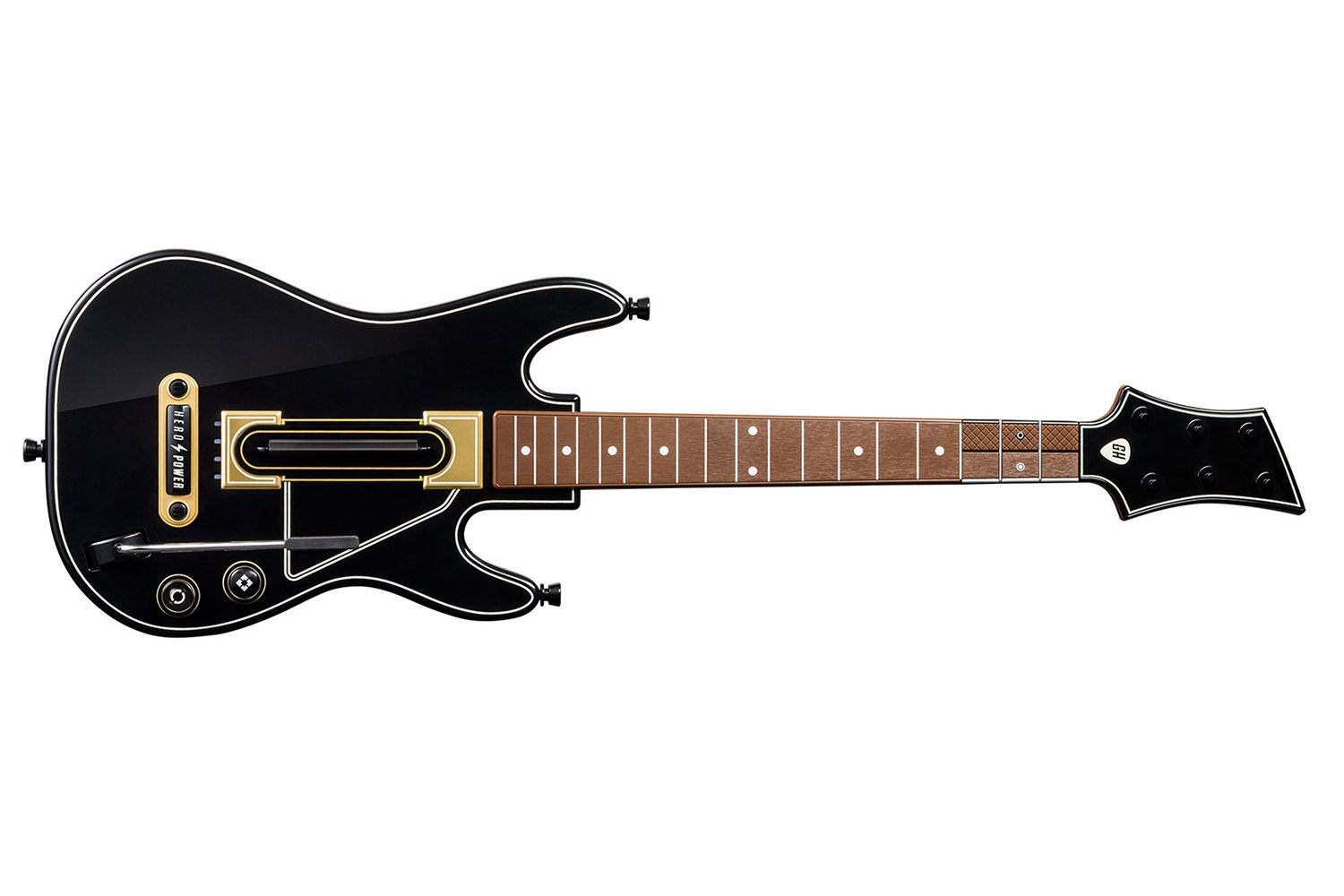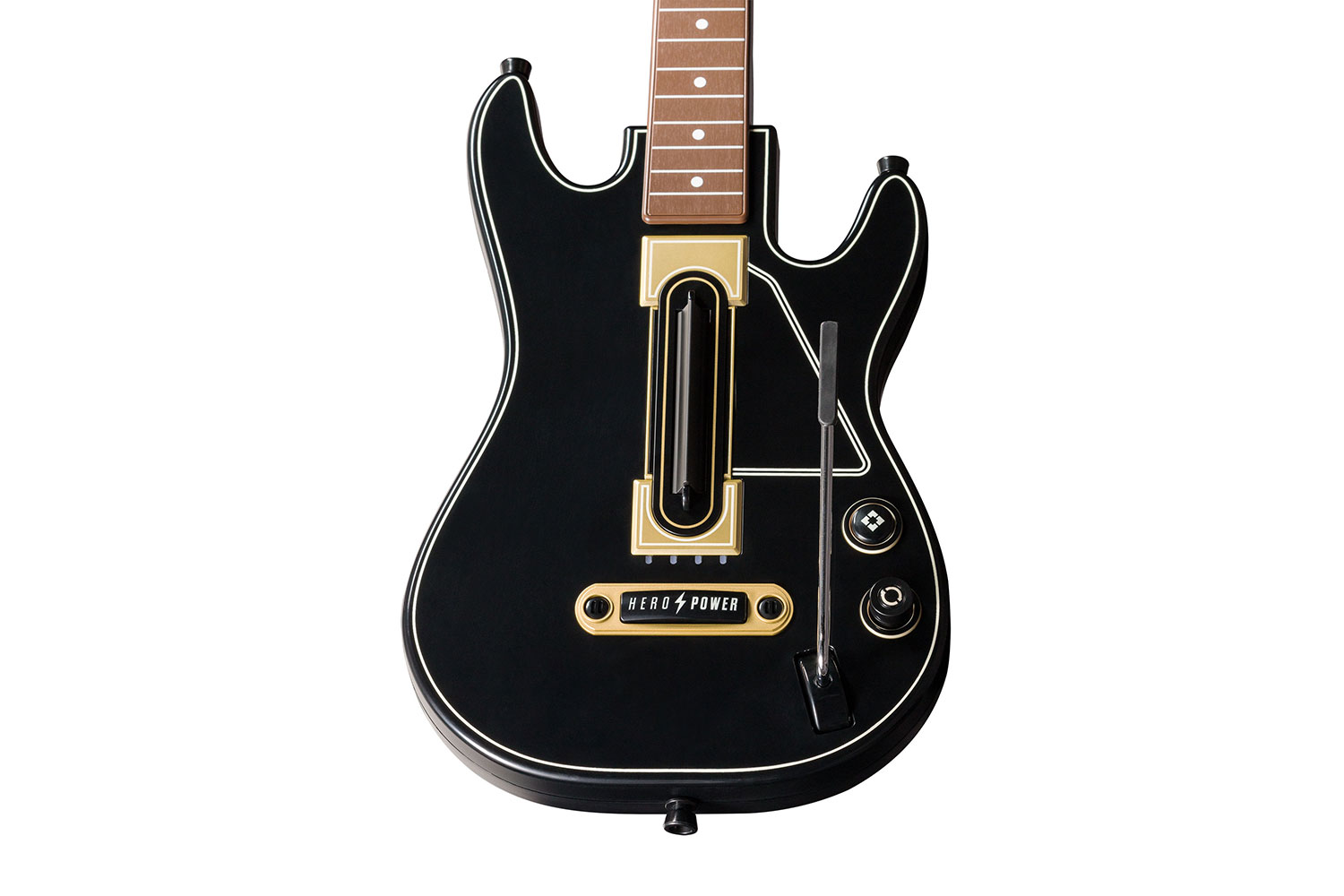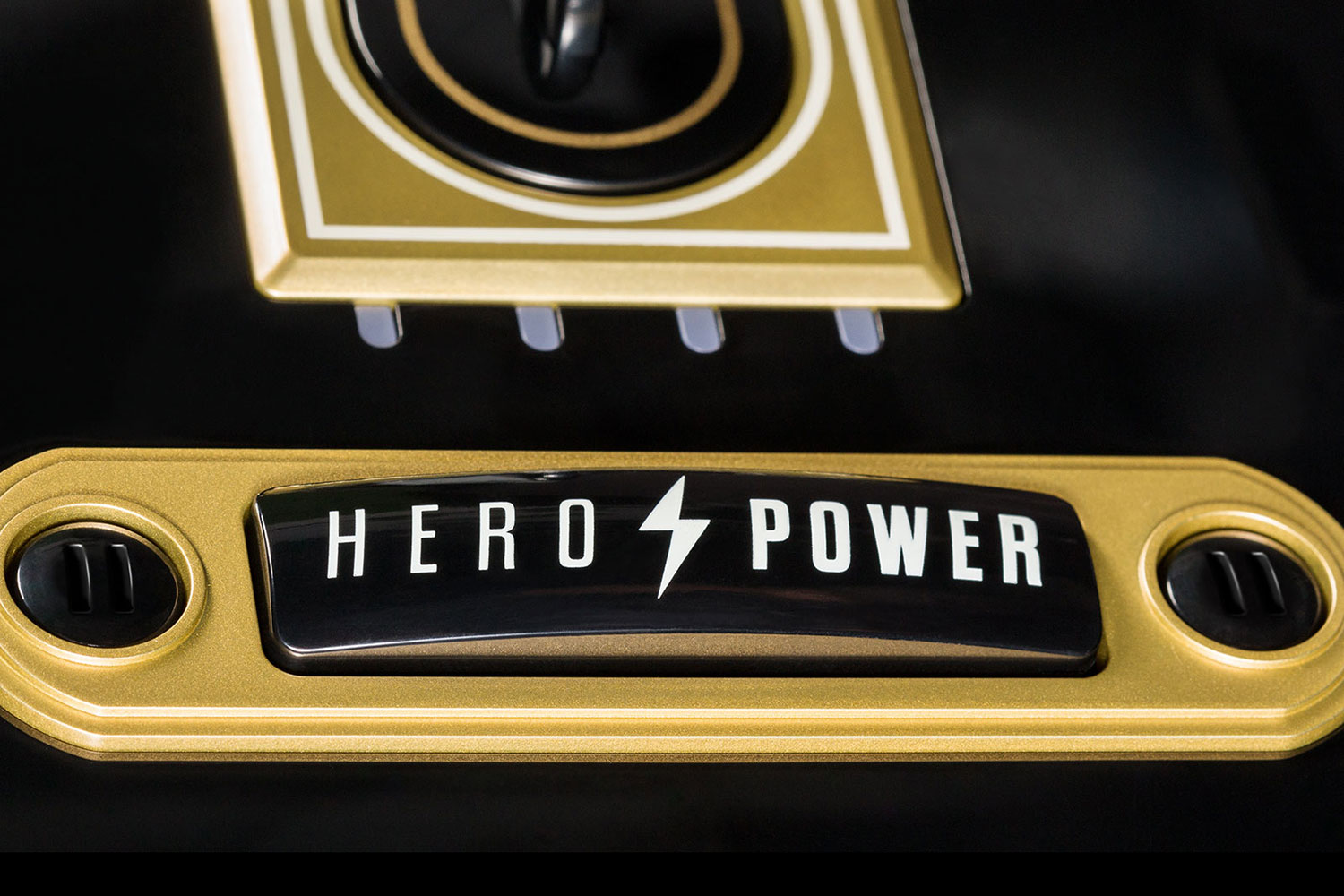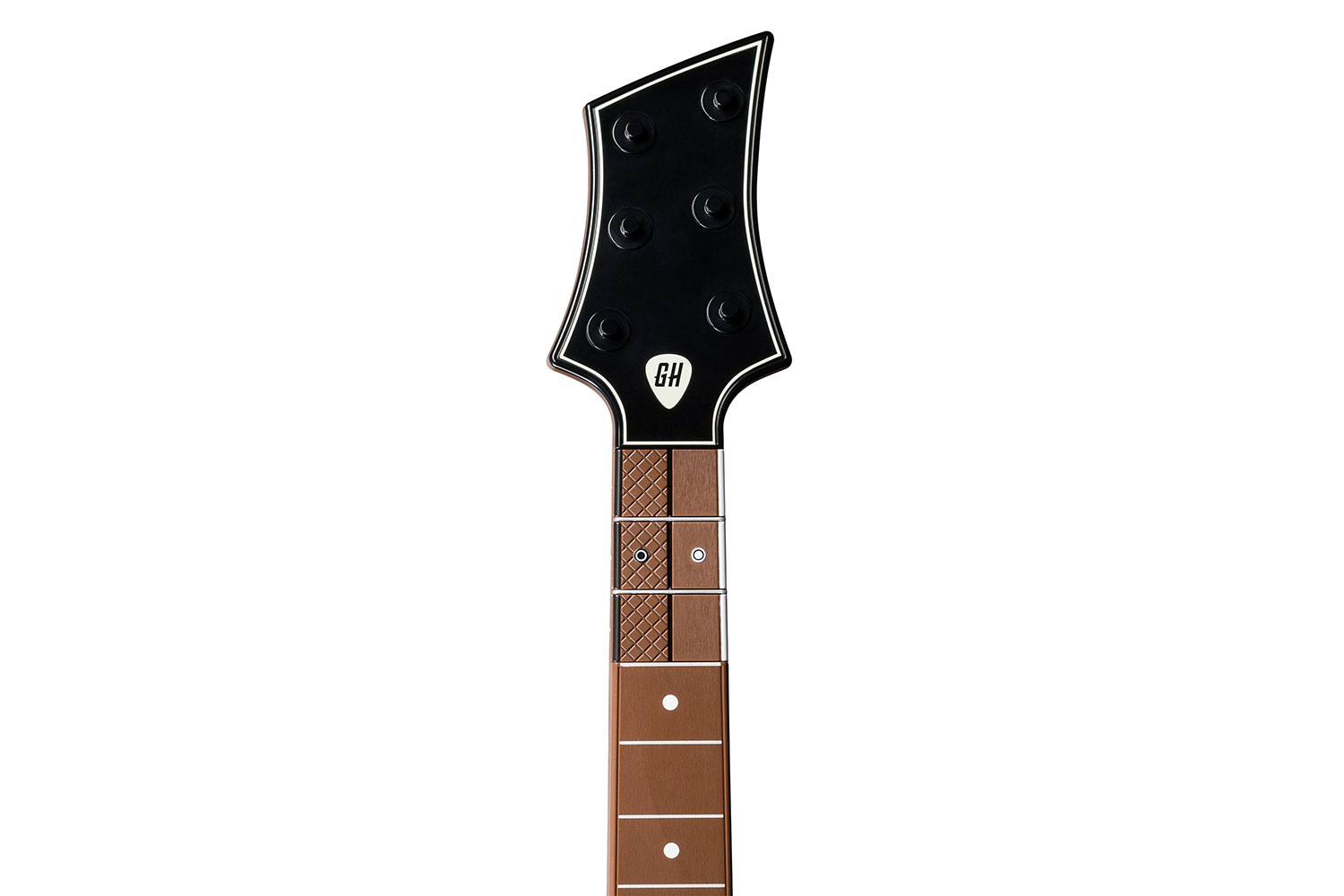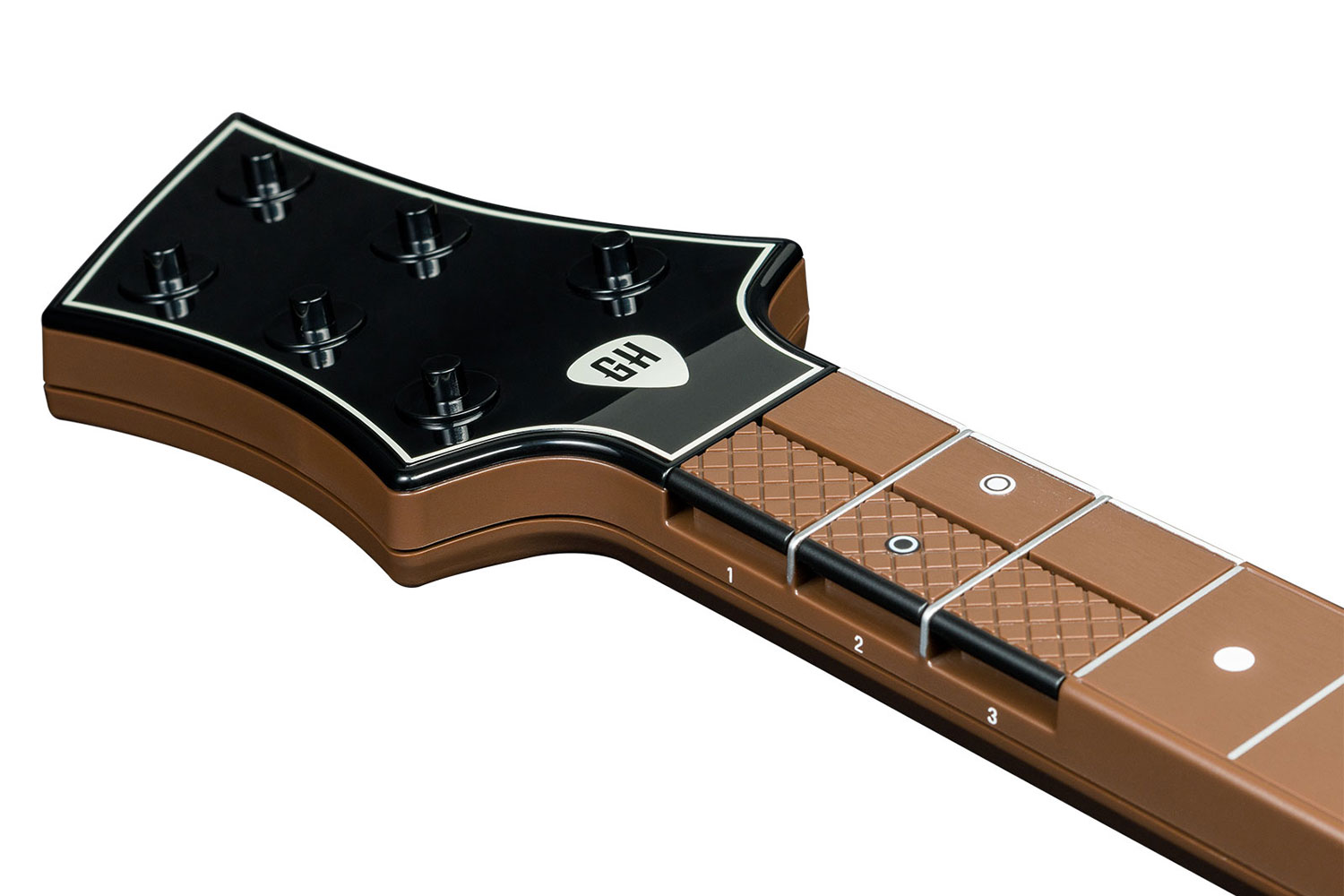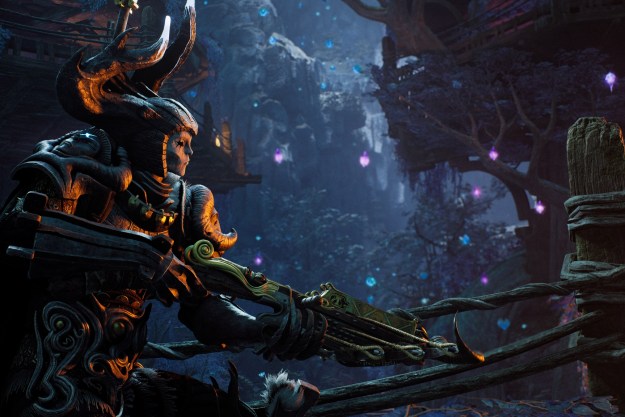After making plastic guitars a fixture of every living room and dorm during the first part of the new millennium, the Guitar Hero franchise has spent the last five years letting those axes go dusty. The market became so saturated with rhythm games, Activision rightly opted to set the series aside for a while.
Now at the tail end of 2015, the powers that be are dusting off the franchise off and tuning it back up with Guitar Hero Live. Activision entrusted the revival to the UK’s FreeStyle Games, the same developer responsible for the previous DJ Hero spinoff.
At a recent preview event in Los Angeles, I had the chance to sling one of the new guitars, rock out, and speak with the new game’s creators about what makes this return to a beloved, but long-dormant series so special.
New axe to grind
Far and away the most sweeping and important change in Guitar Hero Live is the redesigned guitar controller. Although the update risks alienating loyal fans of the series who might be miffed at the prospect of buying new hardware — Rock Band 4 is taking advantage of this by continuing to support the old design — the new controller is a categorical improvement over the earlier design.
Guitar Hero Live feels much closer to the experience of actually playing the guitar than any previous iteration.
“It’s a totally new way to play,” producer and interface designer Pete Bucknall explained to me. “It’s more realistic, it’s more connected, it gives us more freedom to be able to mark up the songs with new chord shapes and stuff like that. There’s so much room to explore new possibilities and make the songs more connected and fun.”
The change from one row of five buttons to two rows of three buttons smooths and extends the game’s difficulty curve, simultaneously making it easier for new players to get into and adding a greater degree of complexity for more skilled players to master. Learning the previous configuration entailed passing over pretty hard-lined plateaus as new buttons were added, which caused many players to stall out at a particular difficulty level. For instance, I confess I never really passed beyond medium to add the fifth button, getting totally lost when I needed to move up and down the neck.
The new controller never necessitates more than three fingers, which can stay in the same relative positions along the neck. There are no stark jumps in complexity as you progress up the difficulty levels; increased challenge comes instead from the gradual addition of chord shapes and barres. This nuance makes progress much less discouraging and easier to grok.
Be a rock star
The design also greatly enhances the realism and immersion of playing. As an artistically-inclined white guy with a liberal arts degree, I have a requisite modicum of experience noodling around on the acoustic guitar. Even on lower difficulties, Guitar Hero Live feels much closer to the experience of actually playing the guitar than any previous iteration.
This focus on immersion, on the fantasy of being a rock star, is one of the guiding principles behind Guitar Hero Live’s development. Bucknall is part of the team that sets the connection between the songs and the triggers you need to hit. He emphasized how FreeStyle’s developers being musicians shapes their work.
“All of us in the markup team, we’re all musicians, we’re all guitarists, first and foremost, and we’re all fans.”
“We try and find the best balance between musical accuracy and fun gameplay as well. All of us in the markup team, we’re all musicians, we’re all guitarists, first and foremost, and we’re all fans of the Guitar Hero franchise, so we work together closely to try and make each song as well-connected and fun to play as possible.”
The game’s eponymous “Live” mode doubles down on this sense of realism by putting you in a first-person perspective on stage, with live-action footage of band mates and audiences that respond to how well you play. Creating Live mode was an impressive technical feat, using a robotic camera crane to film the exact same sequence of movements in multiple takes, creating versions where you are doing well or poorly that can be stitched together on the fly with minimal transition.
“Seamless” was the word used again and again to describe the effect, but the way that the whole screen blurs out for a second to cover the switch ends up making the seams quite apparent. In Guitar Hero, as in driving, it can be dangerous to take your eyes off the road, and so often the transition between shots would pull me out of my myopic focus on the upcoming notes, and draw my attention to the background.

That’s not to say that the mode doesn’t work on the whole. Seeing the drummer glare at you after a botched solo gives a very personal kind of feedback that you don’t get from numbers or meters. As Bucknall described, “It makes you really feel it in your gut that ‘oh, OK, they hate me — that’s it’ and that feeling gives you more incentive to want to get it back and regain their love for you.”
“It’s not so much a story mode, more just being rock star at a festival and having a great time, trying to do your absolute best to make the crowd love you. Just being a rock star, that’s what GH Live is.”
Play your way down memory lane
I found myself more interested in the game’s other mode, Guitar Hero TV, which offers a selection of music videos with which you can play along. The larger, more diverse catalog of songs may have a lot to do with my preference. Nostalgia drove my initial choices, playing my way through music that was popular while I was in high school like Weezer’s Buddy Holly (with that great Spike Jonze-directed video that remixed old Happy Days footage) or Lit’s My Own Worst Enemy. Then I went back into some more timeless classics from the likes of Iggy Pop and Blondie.
“The way we consume music now is different than it was five years ago.”
This a la carte streaming mode, a descendant of online services like YouTube and Spotify, is a reflection of the current music industry and how much it has change since the last Guitar Hero game. “The way we consume music now is different than it was five years ago,” Bucknall explained. “GHTV will be a great way to discover music. There will be different channels like your TV, and you can turn it on and find something playing that you may have never heard before.”
The ever-growing rotation of songs available on GH TV will provide a larger and more diverse selection of music for Guitar Hero Live than any previous iteration of the franchise. The initial range mirrors the diverse musical interests among the developers at FreeStyle, and ongoing community feedback will allow them to respond to what the players want.
For the love of music
The overwhelming sense I got from playing the game and talking to its creators is that this is a passion project, driven by a love of music and a love of the Guitar Hero franchise. New to the series, these fresh-eyed developers have created the cleanest and most well-honed version yet. Everything goes back to support that central fantasy of being a rock star.
Perhaps the best indicator of the game’s longevity is that the developers themselves still actually like playing it. This was apparent at the event, but even outside of the festive environment, Bucknall assured me that they all still love to play:
“We play it five days a week, we’re playing these songs over and over again, yet still I’ll go home in the evening and still want to play these songs. I think that’s a testament to how fun this game is. It totally sounds like I could just be saying this, but I’m being completely genuine. As a guitarist, I just want to jump in and play more.”
It’s a fun and satisfying challenge, and one that I look forward to spending a lot of time on when the game arrives later this year on October 20.
